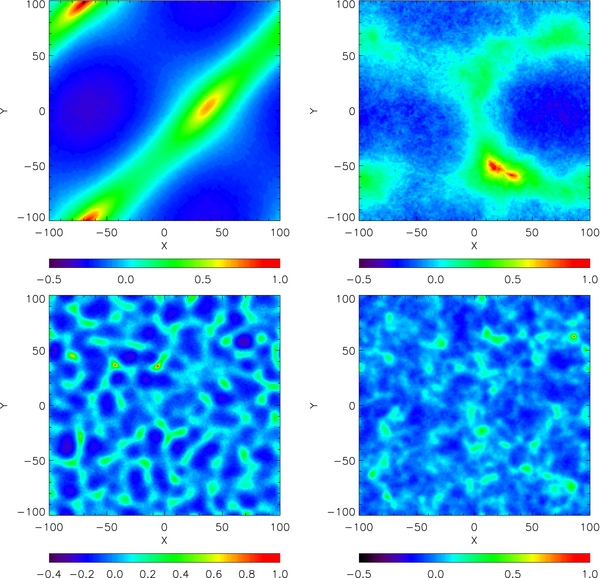| EPoS Contribution |
|
Non-Ideal Magnetohydrodynamic Simulations of the Two-Stage Fragmentation Model for Cluster Formation
Nicole Bailey U Leeds, Leeds, UK | |
| The importance of the ionisation fraction and magnetic fields in the dynamical evolution of molecular clouds and the formation of dense cores is investigated. Linear analyses have shown that the fragmentation length and time scales can undergo a dramatic drop across the column density boundary that separates the ultraviolet and cosmic ray dominated ionisation regimes. We model molecular cloud fragmentation with thin disk non-ideal magnetohydrodynamic simulations that include ambipolar diffusion, partial ionisation and sub-sonic turbulence. We assume a column density/visual extinction dependent ionisation profile that transitions from primarily ultraviolet dominated to cosmic ray dominated regimes in a step-like manner. These simulations show that the absence of an ionisation drop and/or regular perturbations leads to a single-stage fragmentation on parsec scales in transcritical clouds. However, we find that a combination of initial transcritical mass-to-flux ratio, evolution through a column density regime in which a drop in the ionisation takes place, and regular small perturbations to the mass-to-flux ratio are sufficient to cause a second stage of fragmentation during the nonlinear evolution. I will discuss the results of the simulations and touch on recent outcomes including the ionisation structure, velocity structures, kinematics, and synthetic spectra for neutrals and ions, to be compared with observations of molecular clouds and dense cores. | |
 | |
| Caption: Column density enhancement maps for Model A (step-like ionisation profile, initial perturbation only, initial mass-to-flux ratio (mtf) = 1.1; upper left) , Model C (step-like ionisation profile, perturbations every t/t_0 = 10, mft = 1.1; upper right), Model F (step-like ionisation, perturbations every t/t0 = 10, mft = 2.0; lower left) and Model G (cosmic ray only ionisation profile, perturbations every t/t_0 = 10, mtf = 1.1; lower right) | |
| Collaborators: S. Basu, UWO, Canada P. Caselli, U Leeds, UK |
Key publication
Suggested Sessions: Cores |

